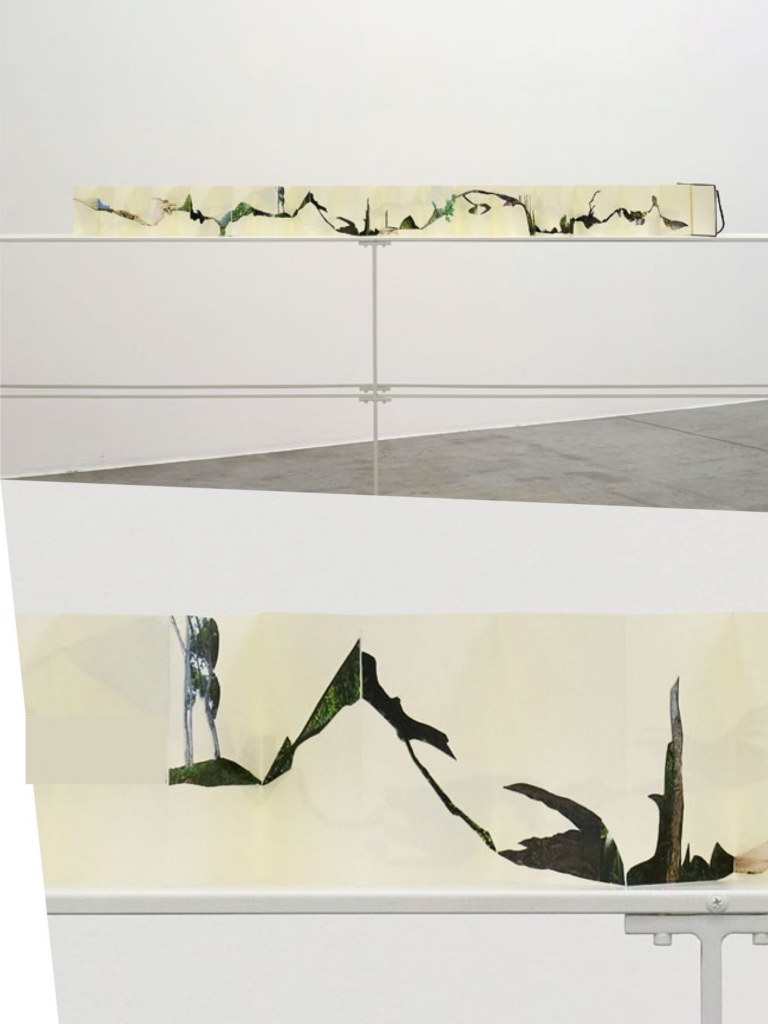MUHANNED CADER
Born in 1966 in the Sri Lankan capital, Colombo, he lives and works in Galle, Sri Lanka
Land and Water
2014

Muhanned Cader uses painting, drawing, and collage to make small format works that are grounded in the personal observation and experience of natural landscapes. Cader studiously abstracts sites of nature—like the inland forests of his homeland—transforming them into carefully rendered scenes or collages. He describes these works as “mapping all the ideas of a landscape,” in which he often chooses to avoid the traditional rectangular framing of a canvas to create organically shaped views or peepholes into another world. Studying in the US, he received his Bachelor’s in fine arts from the Art Institute of Chicago in 1994. He was awarded Sri Lanka’s Kala Suri in 2005—a national order of merit by the President for excellence in the arts—and has taken part in exhibitions such as the 1st Lahore Biennale (2018), the Kochi-Muziris Biennale (2014), and the Singapore Biennale (2006).
Land and Water (2014) comprises one of the accordion books that have become central to Cader’s practice. Composed in a Moleskine notebook and extending almost two meters when fully unfolded, this work is an example of his signature visual language of collage, with its fluid, gestural arrangement of cut-outs and his ease with color. Sourced from personal snapshots and found materials, the composition of Land and Water suggests the transitions across transcontinental vistas. Forming an irregular but continuous path across not one but many landscapes, the work suggests points of juncture, where change has occurred. Starting at one end, the viewer wanders through different terrains, navigating along shapes and outlines. The shimmering sky-blue that could point either to heaven or sea meets the earth-tones of an evident desert followed by a sliver of green. This preoccupation with a view of land meeting water is found repeatedly in his work as a fundamental element of all natural scenes, occurring here at vertical interfaces instead of across the horizontal. While the stretched horizons of his landscapes and work titles sometimes have metaphorical undertones that suggest larger questions, in his open-ended practice, the artist is first and foremost preoccupied with finding formal language in color, shape, and form.
